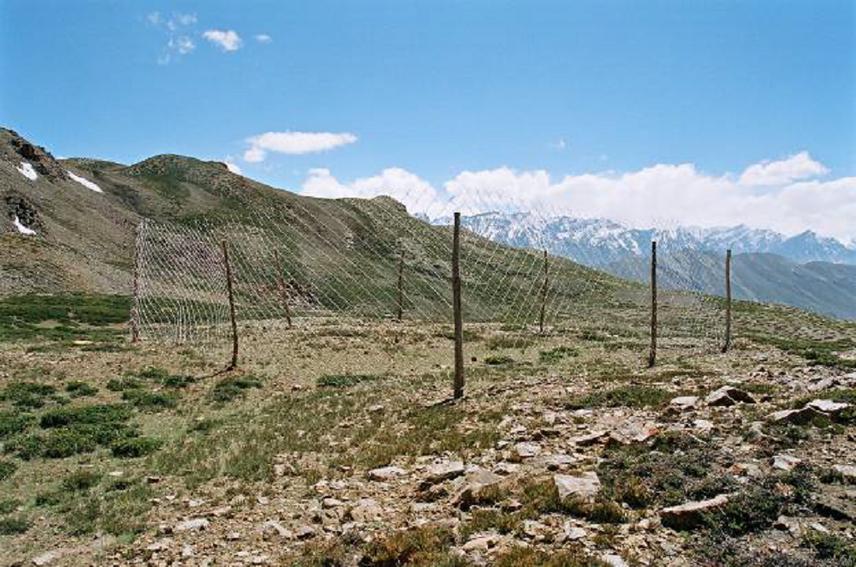Sumanta Bagchi
This project will try to determine the properties that enable certain rangelands to harbour many wild species, whereas others are more extinction-prone and retain only a fraction of their original species pool.

One of the herbivore exclosures setup in Spiti region of northern India.
Trans-Himalaya is a vast rangeland system (2.6 million km2 total, 186000 km2 in India) that has supported traditional pastoralism alongside several fascinating mountain-mammals. The importance of these rangelands for wildlife conservation is increasingly being recognised, and the threats faced by them are also being highlighted. One major threat is posed by rising livestock populations, leading to out-competition of wild species. As traditional grazing practices erode, 80% of the rangelands are now overstocked, with livestock being more numerous than wild herbivores.
Lacking in natural-prey, the predators (like Snow Leopards) take to preying on livestock, resulting in severe human-wildlife conflict. There is also a growing concern over rangeland-degradation, and their long-term sustainability as wildlife habitat and also for peoples’ livelihoods. Previous research led to participatory programmes for mitigating human-wildlife conflict, but questions over degradation remain unanswered. There is a lack of ecological understanding of the interactions between grazing, plants and soils and certain key research-inputs are required whereby the Trans-Himalaya is studied as a coupled human-natural ecosystem where people and wildlife depend on ecosystem functions like productivity and nutrient cycling.
The proposed work will try to determine the properties that enable certain rangelands to harbour many wild species, whereas others are more extinction-prone and retain only a fraction of their original species pool. This will lead to the identification of a set of indicators of ‘rangeland health’ and enable us to identify priority areas for management intervention and also determine the nature of interventions required.